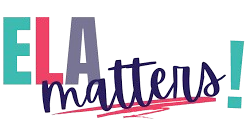No one likes test prep. As teachers, we are always looking for ways to keep it engaging and unique. This is a challenge – especially when the content is dry and the students are not interested. Exploring question types has been proven to be a great way for Jen Berry’s students to really understand the types of questions they would face on the exam and how they work. In Ohio, the ELA End of course exam is taken your sophomore year, but in Berry’s district, grades 6-8 also sit an ELA exam of the same format.
After students are reintroduced to the test format (multiple-choice questions and an essay based on one to two passages), we explore the types of questions they are likely to see:
MAIN/CENTRAL IDEA
HOW CHARACTERS DEVELOP
AUTHOR’S TONE
WHAT DOES THIS WORD/PHRASE MEAN?
FIND THE QUOTE
From there, they let the games begin. Quite literally, board games are created in order to demonstrate knowledge of the question type.
What exactly do these questions want from a student? When a question reads, “What does the author most likely mean by the phrase…,” do students freeze because they don’t understand the words or phrases in the text? Probably. How do we get them to think: “I need to define this phrase. What are my context clues? What words are in the sentence that suggests tone? What trend or pattern do I see?”
Students can easily explore these types of questions on the state testing practice sites. In Ohio, there is a web-based platform with sample papers meant to replicate the testing interface. Sites like this are useful for teachers, but also for students (it’s always best to know the opposition, right?) to acquaint them with the features, but most importantly the styles of questions they will see.
We know that students learn best when teaching others. Building their own questions took time because they had to understand the anatomy of the question, but also the relationship between the question and the text.
Students explored NewsELA and CommonLit to select two texts they wanted to write questions about. They filtered their search to ensure the texts were grade-level appropriate.
From there, students chose their board game and established their rules of play. The one certainty was that all games would involve multiple-choice questions based on the selected articles.
Using the state test practice site for guidance, students began drafting questions, always going back to their question types and writing questions that followed the format of the test. This is where real learning takes place.
On game day, they read, played, and reviewed; there was so much laughter and students were genuinely interested in the process of review as their friends had made the games they were playing. We don’t often say that test prep is all fun and games – but it could be!

